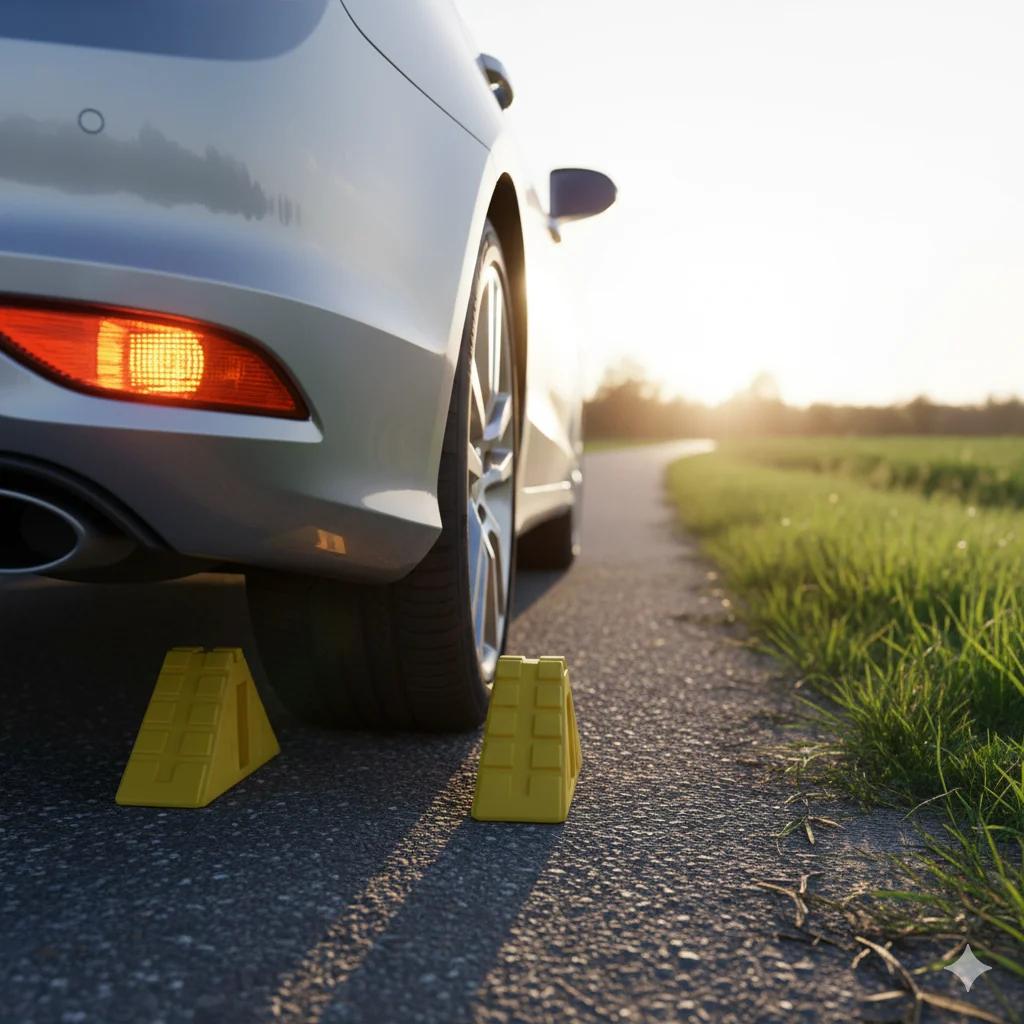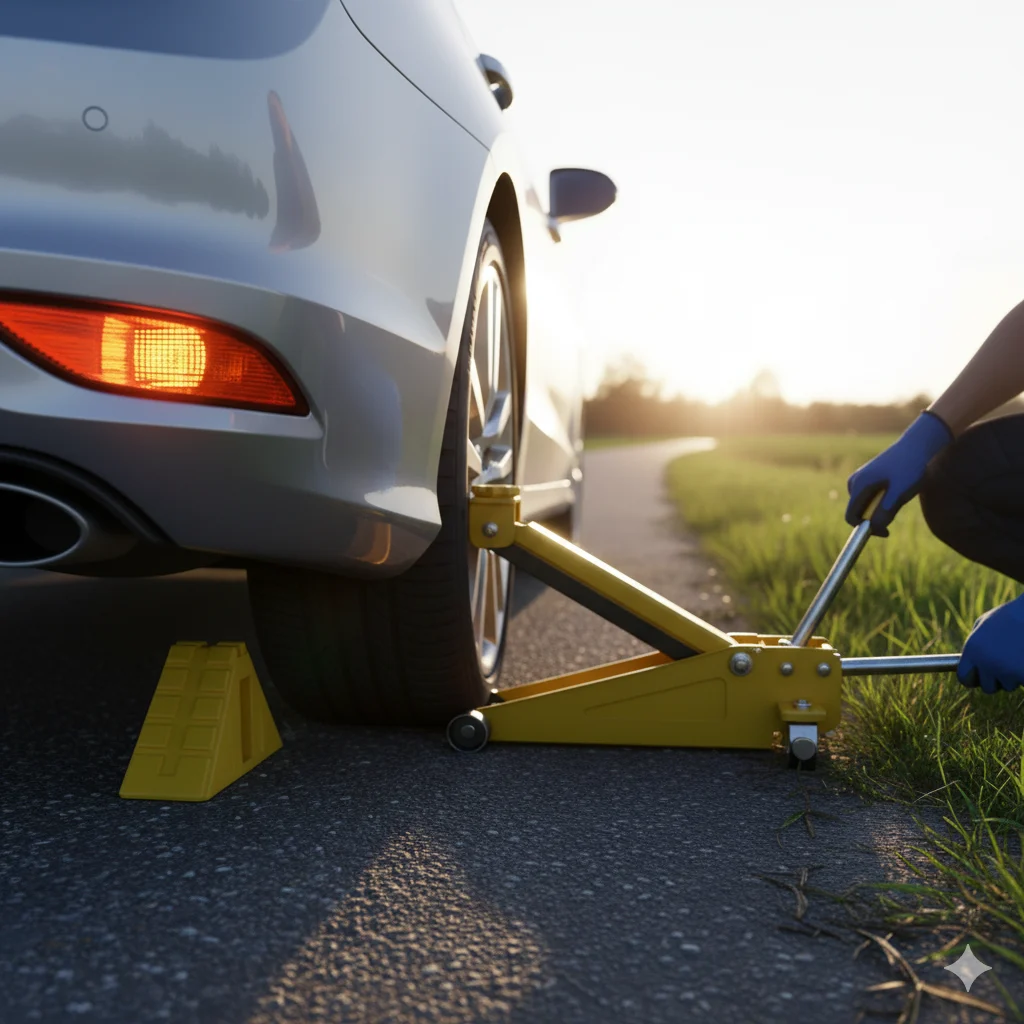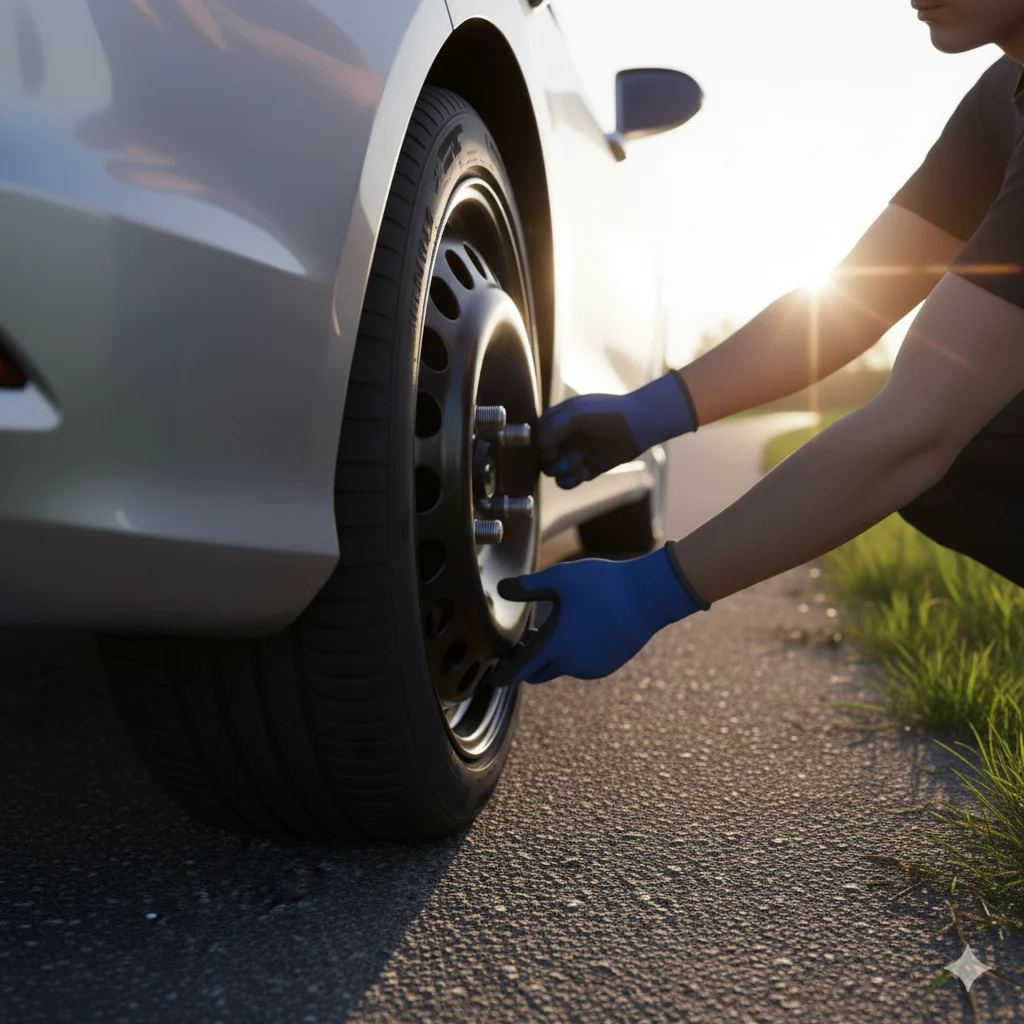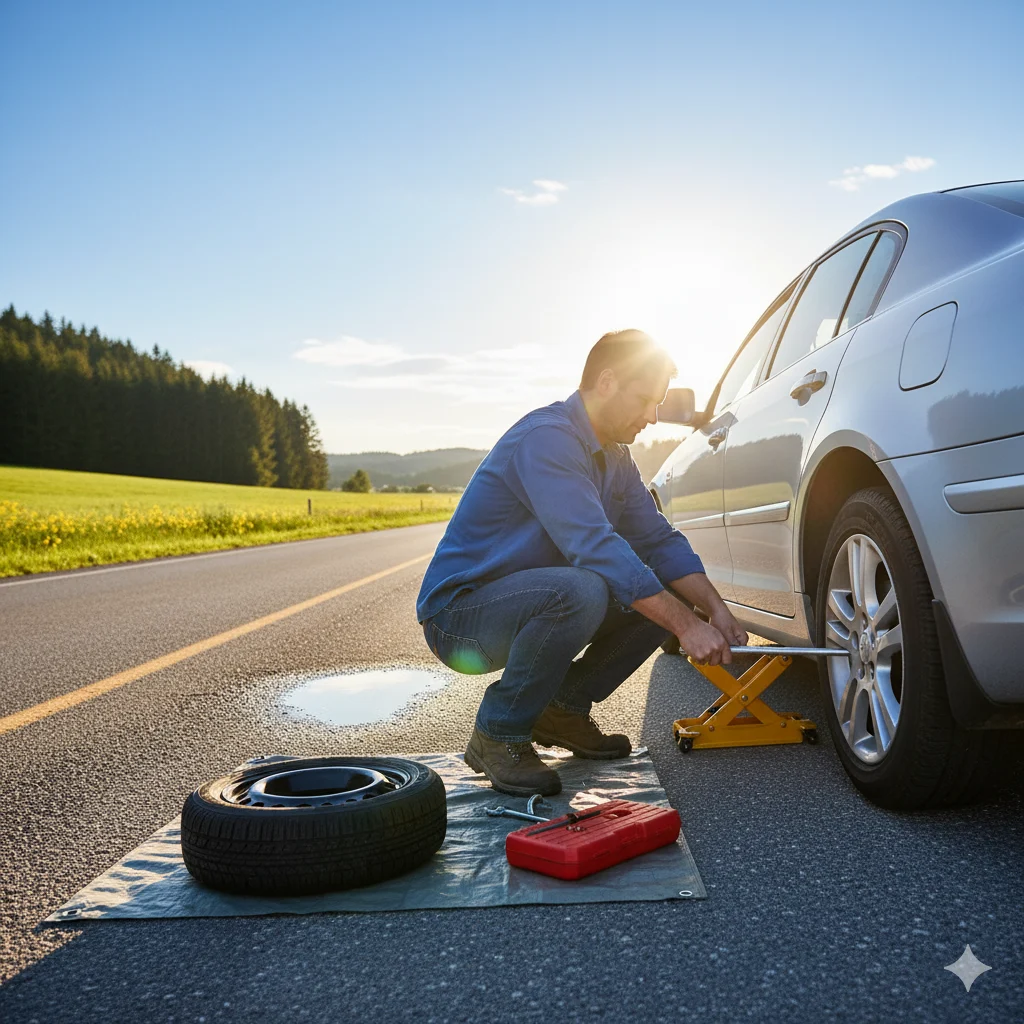A flat tire is one of those unexpected car troubles that can happen anytime — on your way to work, during a road trip, or even in your own driveway. When it does, knowing how to change a tire can save you time, stress, and money.
This easy-to-follow guide will teach you exactly how to change a flat tire step by step, even if you’ve never done it before. You’ll learn the tools you need, the safety measures to take, and practical techniques based on real driver experience.
🧰 What You’ll Need Before You Start
Before you touch a wrench, make sure you have the right tools and a safe environment to work in. Find a flat, stable surface away from traffic, and switch on your hazard lights to alert other drivers.
Essential Tools:
- Spare tire (fully inflated)
- Car jack
- Lug wrench
- Wheel wedges or heavy blocks
- Flashlight (for nighttime changes)
- Gloves and a vehicle owner’s manual
Keeping these tools in your trunk ensures you’re prepared for any roadside emergency.
🔒 Step 1: Ensure Safety and Secure the Vehicle

Safety comes first. Before changing your tire, apply the parking brake and place wheel wedges either in front of or behind your tires to prevent rolling.
If you’re changing a rear tire, place wedges in front of the front tires. For a front tire, put them behind the back tires.
Also, remove the hubcap or wheel cover from your flat tire if your car has one.
🔧 Step 2: Loosen the Lug Nuts
Use your lug wrench to turn the lug nuts counterclockwise. Don’t remove them completely yet — just loosen them about half a turn each.
It’s easier to loosen them while the tire is still on the ground because it provides resistance.
💡 Pro Tip: If a lug nut won’t budge, carefully use your foot for added leverage — but avoid sudden force that might damage the bolts.
🪜 Step 3: Lift the Car with the Jack

Now it’s time to raise your vehicle. Find the jack point near the flat tire — usually under the car frame beside each wheel. (Check your owner’s manual if you’re unsure.)
Place the jack beneath this point and turn the handle clockwise to raise the car slowly. Lift it until the flat tire is about 6 inches above the ground.
⚠️ Never get under the car while it’s supported only by a jack. Stability is key to safety.
🛞 Step 4: Remove the Flat Tire
Once the car is lifted, completely unscrew and remove the lug nuts. Keep them in a safe place — they can easily roll away on rough ground.
Next, grip the tire by the treads and gently pull it straight toward you. If it’s stuck, tap it lightly with your foot to loosen any rust or dirt holding it in place.
Set the flat tire aside in a secure spot away from traffic.
⚙️ Step 5: Mount the Spare Tire

Grab your spare tire and line up the holes with the wheel bolts. Push the tire gently until it sits flush against the hub.
Then, hand-tighten the lug nuts by turning them clockwise. Doing this by hand ensures they’re aligned properly and reduces the risk of cross-threading.
🔩 Step 6: Lower the Vehicle and Tighten the Lug Nuts
Turn the jack handle slowly to lower the car until the spare tire just touches the ground but isn’t bearing full weight yet.
Use your lug wrench to tighten the nuts in a crisscross (star) pattern — tighten one, skip one, then repeat. This ensures even pressure on the wheel and prevents wobbling later.
Once all the nuts are snug, lower the car completely and remove the jack. Give each nut one final firm turn to make sure it’s tight.
💨 Step 7: Check the Tire Pressure
Before you drive, always check your spare tire pressure using a tire pressure gauge.
Most spare tires should be inflated between 30–35 PSI — but check your vehicle manual or tire label for exact recommendations.
If your spare is a temporary (donut) tire, remember:
- Drive no faster than 50 mph (80 km/h)
- Avoid long distances
- Replace it with a regular tire as soon as possible
🦺 Step 8: Clean Up and Store Everything
Once you’re done, put the flat tire, jack, and tools back in your trunk. Double-check that nothing is left on the roadside.
Take a quick moment to ensure all lug nuts are secure before getting back on the road.
🧩 How to Prevent Flat Tires in the Future
A few minutes of regular maintenance can prevent hours of frustration later. Here’s how to avoid flat tires:
- Check tire pressure monthly.
- Rotate your tires every 6,000–8,000 miles.
- Avoid potholes, curbs, and road debris.
- Replace old or worn-out tires (older than 5 years).
- Inspect tires regularly for cracks, bulges, or uneven wear.
By practicing good car maintenance, you can extend tire life and reduce the risk of breakdowns.
🚦 Common Mistakes to Avoid
Even confident drivers sometimes make small but costly errors. Avoid these common mistakes when changing a tire:
- Forgetting to loosen lug nuts before lifting the car.
- Placing the jack on uneven or soft ground.
- Over-tightening or cross-threading lug nuts.
- Driving too far on a temporary spare tire.
- Skipping a tire pressure check after changing.
A few extra minutes of care can make all the difference between a safe fix and a risky one.
❓ Frequently Asked Questions (FAQs)
Q1: How long does it take to change a tire?
Usually around 15–30 minutes, depending on your experience and tools.
Q2: Can I drive on a flat tire to reach a mechanic?
No. Driving on a flat tire can destroy your rim and damage suspension parts. Always stop safely and change the tire immediately.
Q3: What if I don’t have a spare tire?
Use a tire repair kit or call roadside assistance. Some modern cars come with run-flat tires, which can drive short distances even when punctured.
Q4: How often should I check my spare tire?
At least once every three months. A spare that’s flat won’t help you in an emergency.
🏁 Conclusion
Knowing how to change a tire gives you confidence and independence on the road. With the right tools, a calm approach, and basic safety steps, you can handle a flat tire anywhere. Stay prepared, check your tire pressure regularly, and you’ll always be ready to roll safely. 🚗










